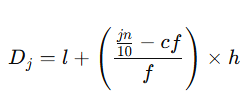Partition values
Introduction
Partitioning is the process of dividing data into equal parts.
Partition Values are values that divide a dataset into equal parts.
Examples: Median, Quartiles, Deciles, Percentiles
These values are also called “Fractiles” and are a part of descriptive statistics.
Why Partition Values are Needed
Sometimes data has very small or very large values (outliers).
These can affect the average (mean), giving a wrong impression of the dataset.
Partition values help to accurately represent the data.
Types of Partition Values
1. Median (Q₂)
It is the middle value when data is arranged in order.
Divides data into two equal parts.
Formula (for ungrouped data):
Formula (for grouped data):
2. Quartiles (Q₁, Q₂, Q₃)
Divide the data into four equal parts.
Q₁ (First Quartile): 25% of data below it.
Q₂ (Second Quartile): Same as Median.
Q₃ (Third Quartile): 75% of data below it.
Formula (for ungrouped data):
Formula (for grouped data):
3. Deciles (D₁ to D₉)
Divide data into ten equal parts.
D₁ = 10% data below, D₉ = 90% data below.
Formula (for ungrouped data):
Formula (for grouped data):
4. Percentiles (P₁ to P₉₉)
Divide data into 100 equal parts.
P₁ = 1% data below, P₉₉ = 99% data below.
Formula (for ungrouped data):
Formula (for grouped data):
Terminology Used in Formulas
l = lower limit of the class interval
cf = cumulative frequency before the class
f = frequency of the class
h = class width
n = total number of observations









Leave a Reply